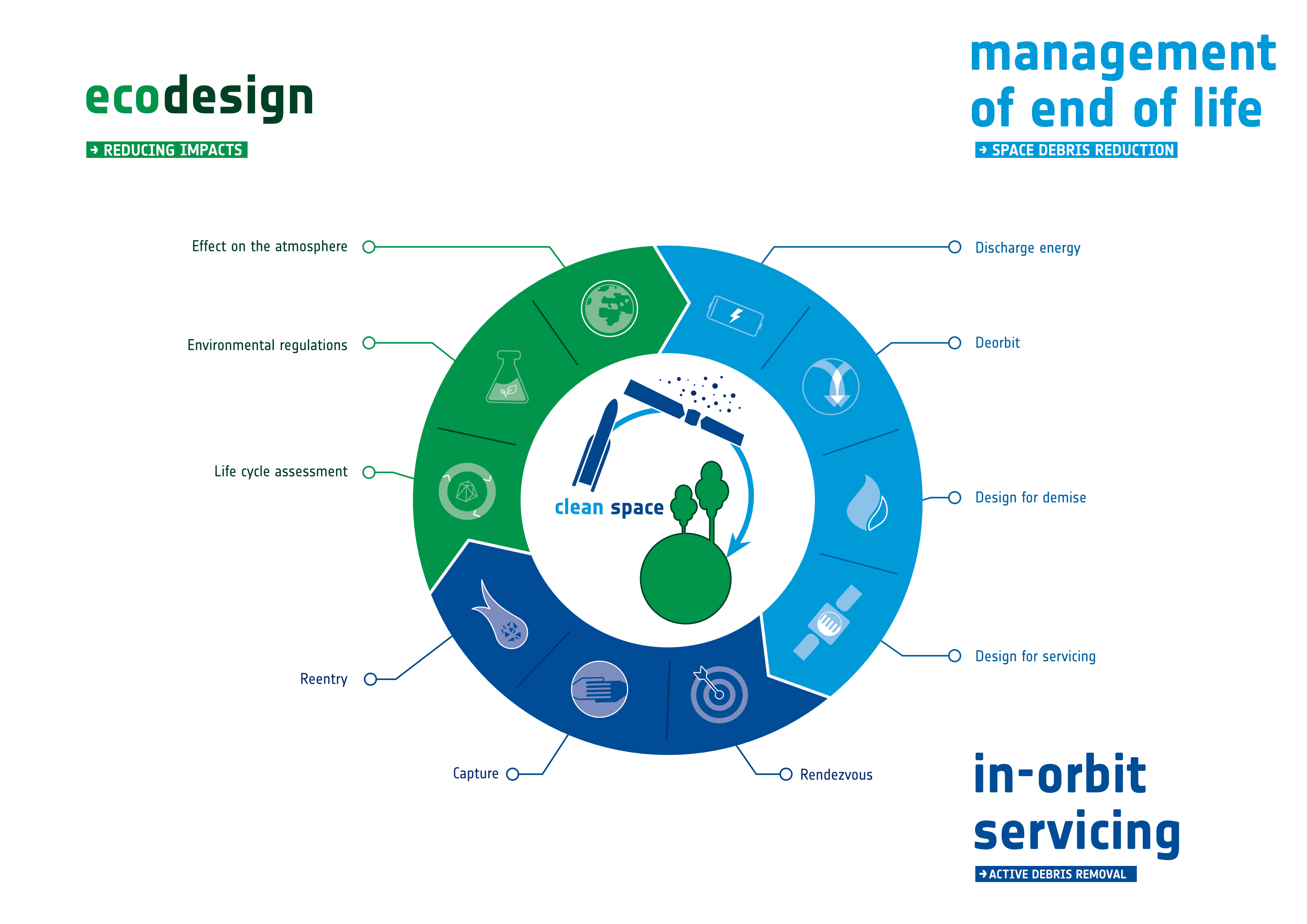Clean Space
Clean Space is the European Space Agency’s initiative, started in 2009 with the ECOSAT study, to safeguard the terrestrial and orbital environments, while boosting the innovation and competitiveness of Europe’s space sector.
Clean space, the new name of this Cross-Cutting Initiative, started to be used since 2013. The goal is to understand and reduce the environmental impact of space missions across their entire life cycle, minimising the production of future debris and removing defunct satellites.
Today, environmental legislation is one of the fastest-moving sectors of European and world law.
Space industry is not excused from these laws; it must operate within the same jurisdiction as the rest of the planet since environmental protection must be extended to space. the Agency also aims at being at the forefront in the field of ecodesign with the space sector. The Agency is currently recognised as the global leader in the field of ecodesign for space activities - thus supporting European space industry in being extremely competitive. This marks the first step in the process of transitioning its activities to a more sustainable foot-print through the adoption of clean technologies.
New legislative demands and regulations such as the European Commission’s regulation on the Registration, Evaluation and Authorization of Chemicals (REACH) and the Restriction of Hazardous Substances (RoHS) directive overseeing toxic substances threaten to impact the space industry by imposing potential limitations on currently essential materials.
ESA is pioneering an eco-friendly approach to space activities. On the ground, this means adopting greener materials, processes and technologies. In space, it means preserving the Earth’s orbital environment as a safe zone, free from debris.
The Agency aims to turn environmental challenges into opportunities for the European space industry
Clean Space has three branches.
They reflect its mission to assess the environmental impacts of Agency programmes designed to find ways to address these challenges, and contribute to a more sustainable and competitive European space industry.
- ECODESIGN: Embedding environmental sustainability within space mission design
- MANAGEMENT OF END OF LIFE: Developing technologies to prevent the creation of future debris
- IN-ORBIT SERVICING: Actively removing spacecraft from orbit and demonstrating in-orbit servicing.



